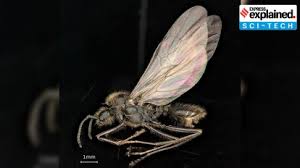Insects continue to surprise scientists with their extraordinary biology, and the latest discovery about Mediterranean harvester ants has left researchers amazed. According to a new study published in Nature, queens of the species Messor ibericus are able to produce males that belong not to their own species, but to Messor structor. This phenomenon is unprecedented and is rewriting some of the long-accepted rules of biology.
Challenging Traditional Reproduction Rules
The basic understanding of reproduction is simple: parents produce offspring of the same species. However, Messor ibericus defies this principle. Female ants are born through normal sexual reproduction, but when queens generate males, they use parthenogenesis—an asexual process where eggs develop without fertilization. The result is astonishing: the male offspring are not Messor ibericus, but Messor structor.
This is one of the rare instances in nature where one species can naturally give rise to another.
How Scientists Discovered the Phenomenon
An international team of researchers from France, Italy, Bulgaria, and Austria collaborated on the study. By analyzing DNA samples and carefully observing ant colonies, they confirmed that the males produced by Messor ibericus queens genetically matched Messor structor.
Ants and Their Complex Genetics
Ants have always been fascinating due to their social structures and unusual genetics. They reproduce under haplodiploidy, a system where fertilized eggs develop into females and unfertilized ones into males. But the case of Messor ibericus adds a new twist—males belong to another species altogether.
This adaptation may help maintain genetic diversity, link related species, or even increase colony resilience in the Mediterranean ecosystem.
Implications for Evolutionary Biology
The discovery raises important questions for evolutionary science. Why would nature allow one species to produce another? Could this behavior help ants survive environmental pressures? Is it an evolutionary strategy to strengthen populations?
Professor Serge Aron, co-author of the research, explained
The Road Ahead for Research
The scientists behind this study believe this is only the beginning. They plan to examine whether similar reproductive strategies occur in other ant species or insect families. If this phenomenon is more widespread, it could transform how we classify species and how we interpret biodiversity.
Future studies will also focus on the benefits of this reproductive system. Does producing males of another species serve a functional role in colony survival? Could it be a hidden mechanism of evolutionary adaptation?
Redefining Species Boundaries
One of the most striking outcomes of this study is its challenge to the biological species concept. Traditionally, species are defined as groups of organisms that can reproduce with one another and produce fertile offspring. The Messor ibericus case shows that nature doesn’t always fit neatly into human categories.
Conclusion
The discovery that Messor ibericus queens can give birth to male offspring of Messor structor is one of the most fascinating breakthroughs in recent biology. It proves that the natural world is far more flexible and complex than scientists once believed.
This finding not only forces a rethink of species definitions but also highlights the hidden evolutionary strategies that shape life on Earth. Ants, despite their tiny size, continue to reveal some of nature’s biggest secrets.


